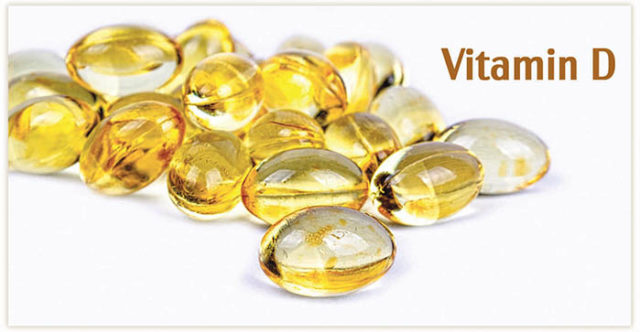Since this vitamin plays such a vital role in our well-being, making sure our diet includes foods that contain vitamin D is essential.
By Alison Crane
Vitamin D insufficiency affects almost 50% of the population worldwide. This fat-soluble vitamin is naturally present in some foods and is added to several other foods. Vitamin D is also known as the Sunshine vitamin because our bodies can naturally produce it when the sun’s ultraviolet (UV) rays hit our skin.
Vitamin D has several roles in maintaining a healthy body. It is often called the “bone” vitamin because it helps us to absorb calcium needed to maintain strong bones and teeth and prevent osteoporosis in older adults and rickets in young children. It also helps prevent muscle cramps and spasms. It helps to reduce inflammation and even assists with immune function and glucose metabolism. Many people do not know that it also helps our bodies on a cellular level by working with our genes’ encoding proteins.
Since this vitamin plays such a vital role in our well-being, making sure our diet includes foods that contain vitamin D is essential. Few foods naturally contain this vitamin. Those that do are mostly fatty fish. Fish liver oils are also a good source.
Fortified foods provide most of the vitamin D in our diets. In the 1930s, milk producers first began adding vitamin D to milk. Other dairy products made from milk are not usually fortified but some yogurts and margarines are. Plant milks such as almond or oat milk are often fortified to levels similar to cow’s milk.
The sun’s role in manufacturing vitamin D in our skin requires a balance of enough exposure to allow this natural process time to work and preventing over-exposure which can lead to skin cancer and other health issues.
Most doctors recommend at least 10-15 minutes of sunlight each day to produce the needed amount of vitamin D. Being outside has multiple benefits and usually encourages physical activity. Just remember to apply sunscreen for longer times and depending on what time of day you are out in the sun.
According to the National Institutes of Health, more than 53 million adults in the United States are at risk of developing osteoporosis and over 2 million osteoporotic fractures occur yearly. When we think of osteoporosis, we tend to focus on the lack of calcium being the main culprit, but vitamin D plays such a strong role in our body’s ability to absorb calcium both are vital to health.
Following the Dietary Guidelines for Americans by eating a variety of healthy and tasty foods goes a long way in preventing a deficiency of vitamin D, as well as the many other nutrients that interact with each other to support healthy bodies. For more information on using MyPlate to plan a balanced diet for your family or to learn more about our wellness educational programs, contact the Garland County Extension Service at 501-623-6841 or email acrane@uada.edu.
*Vitamin D Fact Sheet for Health Professionals, National Institutes of Health Office of Dietary Supplements Vitamin D – Health Professional Fact Sheet (nih.gov)
Alison Crane is a Family and Consumer Sciences Agent with the Garland County Extension Service. The University of Arkansas System Division of Agriculture offers all its Extension and Research programs to all eligible persons without regard to race, color, sex, gender identity, sexual orientation, national origin, religion, age, disability, marital or veteran status, genetic information, or any other legally protected status, and is an Affirmative Action/Equal Opportunity Employer.









